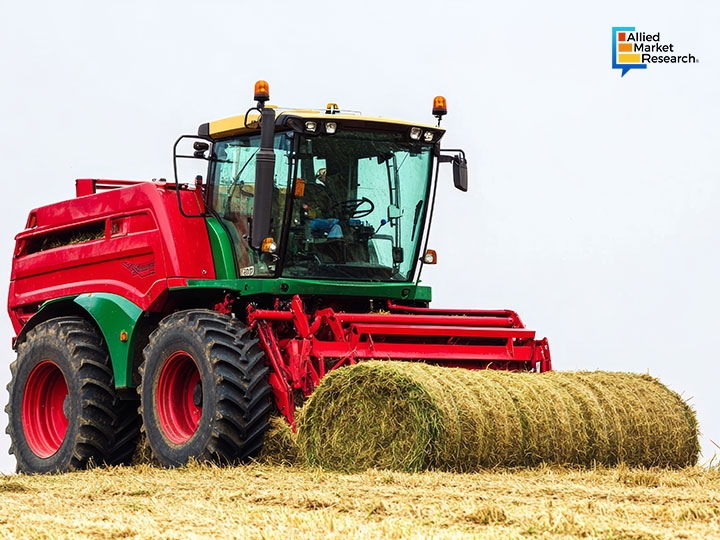How a Baler Machine Can Benefit Your Operation

26 Jun
2025
Highlights:Â
-
IntroductionÂ
-
Smart balers boost safety, efficiency, and data insightsÂ
-
Right machines cut costs and simplify operationsÂ
Every business that compacts materials—whether paper, plastics, scrap metal, or hay—needs to understand what a baler machine does beyond simply squeezing things into cubes or rolls. A baler is more than a machine—it’s a partner in efficiency, safety, and traceability. This blog walks through how baling equipment and the services around it help companies manage operations, comply with standards, and evolve over time.Â
How Smart Control Systems Change the ScenarioÂ
In recent months, there’s been a spotlight on smarter baling tools that do more than just compress. Some machines now come with section-controlled GPS pickups and automatic tractor-implement management. These tools only engage when needed and lift out of the way at headlands, reducing wear and tear, easing operator fatigue, and integrating with tractor systems to stop or eject bales automatically.Â
For businesses, that means fewer errors, better data collection, and more consistent product output. Consider a recycling depot: if the machine engages only when needed, material flow is smoother, staff work less, and machine life extends. For agriculture, better bale density and automatic tying or ejection improve storage, transport, and yield tracking. What matters most is less manual oversight and more reliability.Â
In the past year, major names in the baler industry have merged to simplify their product lines and support. Bringing decades of experience together under one roof means businesses can choose from a broad range of machines—single-ram, horizontal, auto-tie, and auto-shear—while also receiving unified support.Â
For procurement or operations managers, this means one relationship to manage across multiple equipment types. That simplifies ordering and maintenance while ensuring consistent service. Companies with mixed material streams—like plastics, cardboard, and metals—can now standardize more easily and align their equipment across different sites.Â
Dealing with Hidden Costs and Choosing the Right ConfigurationÂ
Even basic equipment can hide surprises. Many companies have learned the hard way that a cheap semi-automatic baler can cause hidden costs, like frequent hydraulic repairs, safety upgrades, and higher energy use. These extras add up fast.Â
In short, choosing a fully automatic model—or simply selecting the right class of baler depending on volume—can reduce total costs over time. Automatic machines also protect operators from repetitive strain, help businesses meet safety compliance, and record cycle data that would otherwise require manual input.Â
Serving Multiple Industries with Custom SolutionsÂ
Today’s balers serve a diverse range of clients. Some manage agricultural by-products like hay, straw, or silage; others crush mixed recycling streams in warehouses, factories, and urban materials recovery facilities. Equipment makers are continually improving their machines so they can process more materials faster and meet environmental standards.Â
Modern machines also come in different shapes and sizes. Some fit small spaces or process limited volumes; others can tie and eject bales on conveyor lines for full-scale industrial sites. These tools help businesses manage their materials without excessive manual labor and without wasting valuable floor space.Â
Making Data Work for Your ProcessesÂ
Baling machines also generate data. Modern units track bale weight, tie integrity, cycle time, and moisture. Some machines go further, logging GPS location or even mapping the areas where they’ve worked. This level of traceability eliminates guesswork. Data can feed into an enterprise resource planning system or waste tracking software to simplify reporting and help managers spot efficiency or maintenance issues early.Â
New features like GPS-enabled control and automatic bale ejection may sound small, but they add up to real gains. Equipment companies are showing that automation can ease manual workloads, protect machines, and improve output consistency. Nowadays, suppliers want to make sales and service easier as well. That’s how buyers face less difficulties and get better support for the machine’s entire lifespan. According to Allied Market Research, the baler machines industry is expected to cite a significant CAGR from 2025 to 2034.Â
Prioritizing Smart Investments for Greater Efficiency and InsightÂ
Although nobody can say exactly what’s next, businesses can make better choices now. Focusing on automation that matches your workflow is expected to help reduce manual handling, cut operating expenses, and improve safety.Â
Businesses can consider choosing machines from companies that offer multiple options under one roof, allowing access to different baler types with a single point of contact for support. It is also important for companies to ask about data capture. Even small improvements in traceability and output logging can help them make better decisions about materials, logistics, and maintenance.Â
The Bottom LineÂ
Smart compaction equipment and responsive service support can make a big difference in everyday operations. Whether it’s an automatic bale-tie feature or a modular conveyor add-on, these tools help enterprises streamline processes and control long-term costs. Equipment is evolving toward greater efficiency and better data tracking, so making decisions based on the whole lifecycle is projected to help companies keep up without overspending.Â
By focusing on fit, service, and data, entrepreneurs can simplify operations and make every bale they produce work a little harder for their business.Â
Reach out to our experts for an in-depth understanding of how the baler machines industry is evolving.Â

Koyel Ghosh
Author’s Bio- Koyel Ghosh is a blogger with a strong passion and enjoys writing in miscellaneous domains, as she believes it lets her explore a wide variety of niches. She has an innate interest in creativity and enjoys experimenting with different writing styles. A writer who never stops imagining, she has been serving the corporate industry for the last five years.
Avenue: Entire Library membership of Allied Market Research Reports at your disposal
- Avenue is an innovative subscription-based online report database.
- Avail an online access to the entire library of syndicated reports on more than 2,000 niche industries and company profiles on more than 12,000 firms across 11 domains.
- A cost-effective model tailored for entrepreneurs, investors, and students & researchers at universities.
- Request customizations, suggest new reports, and avail analyst support as per your requirements.
- Get an access to the library of reports at any time from any device and anywhere.
Related Post
-
How are Submarine Cables Transforming Global Connectivity with Enhanced User Experience?
-
Endoscopy Procedures: Transformations in Techniques and Applications
-
AI-Powered Video Analytics: How the Product Actually Works for enterprises
-
Painting Robots: Transforming Precision Coating and Creative Applications
-
Innovations in Pharmacovigilance Systems Advancing Patient Safety
-
Understanding Edge Security: Keeping Data Safe Near the Source
-
Exploring the Use and Advancements of 3D Laser Scanners in Professional Applications
-
Reinforcing Industrial Controls with Smarter Tools and Training








